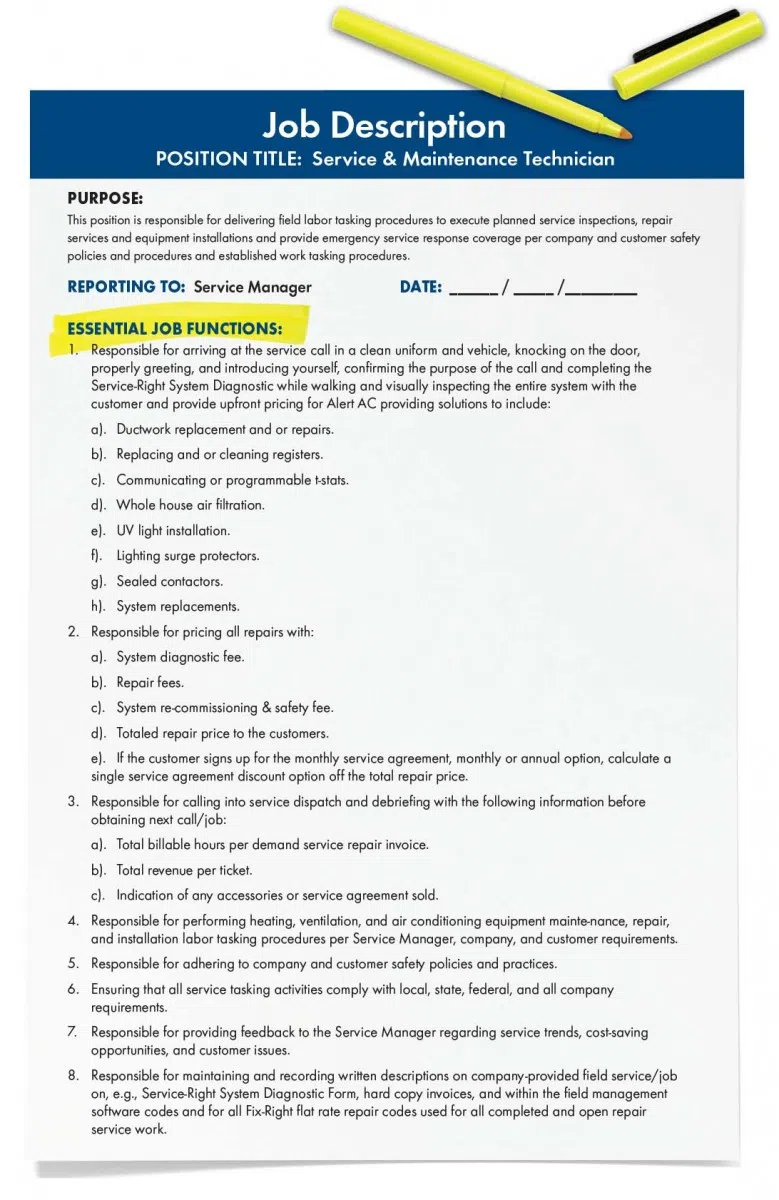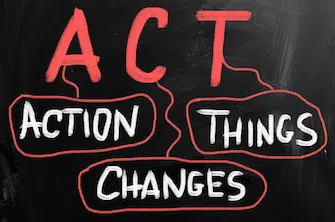This is the fourth installment of a six-part series designed to be a complete A-Z on how to sell and organize for commercial service agreements. The Selling Commercial Service Agreements series includes the following topics:
- Preparing for service agreement surveys
- Equipment and system surveying and data gathering
- Profitable pricing strategies to win the business
- Proposal-writing strategies
- Hiring and compensating sales service sales reps
- Organizing for service agreements
Part IV: Proposal-Writing Strategies
Because the proposal could be distributed internally, it should attempt to clearly address the needs of all potential decision makers.
Studies have shown that customers do not like legal-looking documents or contracts. They prefer documents that are in reader-friendly letter-style format. You may have noticed that the trend today in business-to-business communication style is more consultative or customized to meet the unique customer requirements. Our company’s studies find that best-in-class proposals should contain the following elements:
1. Cover letter, or title page.
- Title of proposal (i.e., Programmed Maintenance Agreement)
- Date
- Your company name, address and logo
- Prospect’s logo, if possible. You usually can download one from the customer’s website or scan from their marketing documents.
2. Executive summary.
- Thank the prospect for the opportunity to propose.
- Thank the prospect and staff for their assistance in helping to develop this offering.
- Provide overview of present situation.
- Provide overview of your proposed solution(s).
- Provide relevant references to similar customers/facilities that you have provided this same solution to.
3. Benefits of programmed maintenance. Summarize in a benefits/feature format and include any special benefits that the prospect could solve with your offering.
- Energy-dollar savings.
- Operating-cost savings.
- Extended equipment life.
- Improved indoor air quality.
- Increased comfort levels.
- Implementation schedule to fit prospects operation requirements.
- Engineering support.
- Guaranteed priority service response.
- Other (i.e., increased productivity, reduced complaints from headquarters, first line of defense for OSHA complaints, enhanced specific category of service delivery).
4. Program implementation team. List all of the people assigned to handle all of the prospect’s business transactions and how the customer can contact them:
- Account executive
- Primary and secondary service technician
- Service coordinator
- Service manager
- Invoicing coordinator
5. Program features. Include the scope of tasking procedures for each piece of equipment.
- Frequency of tasking.
- Filter service (included/excluded).
- Component-repair coverage (included/excluded).
- Emergency coverage (included/excluded).
- Refrigerant-containment services.
- What service documentation will be provided to meet communication requirements?
- Scheduled meetings with prospect to review performance and make corrective or service scope-of-work modifications.
- Any special services.
6. Pricing and payment terms.
- Annual price
- Multi-year prices
- Invoicing options
- How equipment adds/deletes will effect price
- Payment terms usually net (30) days upon invoice.
7. Offer and acceptance signature.
- Your signature line.
- Customer signature line, title date, and P.O. number, if required.
- Your designated authorized signature line, title, and date.
8. Terms and conditions.
- Established obligations for each party.
- Established equipment-liability exclusions.
- Established limits of performance and financial obligations.
- Established liability limits on regulatory mandates.
9. List of covered equipment as part of an appendix. List the equipment covered by the agreement.
- Where each piece of equipment is located by address.
- The make, model, size, and physical location within the facility of each piece of equipment.
10. Equipment-tasking procedures as part of the appendix.
- Itemize typical tasking procedures you will perform for each piece of equipment (annual, operational, start-up shut-down).
11. Enhancements you can add.
- Equipment or system pictures with text describing a situation you will correct (e.g., picture of dirty coils).
- Prospect logo on cover sheet.
- Additional technical details or supporting data.
5 Ways to Differentiate Your Offerings
If you are already serving the client you are making the proposal to, then you must take the business away from an incumbent competitor. Here’s how to differentiate your offering from the competition.
- Provide a free photo record of the client’s equipment. Most contractors already use digital cameras to capture signs of poor maintenance for the sales rep to use to demonstrate the need for your services. They then use the photos in the proposal. So why not offer clients a photo record of their equipment to get into the door?
- Conduct a physical survey of the inside of their equipment to identify the shortcomings of their existing program. Most of your competitors will simply get the equipment list, identify the filter type by asking the customer, and make a proposal based on price. Our studies show that owners who actually occupy the building are concerned about energy, indoor air quality, and tenant productivity. Opening up equipment enables you to see obvious signs that their program is not working to address their specific concerns.
- Clearly communicate your company’s field management and quality-control process. The only way for the customer to have equipment that is maintained to the equipment manufacturer’s original installed specification is for the service technician to use equipment-tasking sheets. Most manufactures require more than 55 specific maintenance, cleaning, calibration, and tuning tasks on unitary equipment alone. There is no way even the best technicians can remember to systematically and consistently do each task. This is why we find that 80% of all buildings are being poorly maintained. Another best practice is to have a field supervisor or service manager randomly inspect all work done in the field to verify appropriate work methods and safety training. Let your customer know why this is important during your presentations and in your proposal.
- Brand your services. Customers want to do business with contractors that understand their unique needs. Use a brand name for your maintenance agreements such as “Protection for Property Management” or “Health-Guard Program” for healthcare facilities. Our studies of our commercial members found that this single strategy alone increases sales-close rates 17%.
- Use service-delivery technologies. Using delivery technologies such as computer dispatch, GPS in your service vehicles, and computer reports allow you to demonstrate that your company has fast and accurate response capabilities more akin to being the UPS of the HVAC industry.
Use field diagnostic tools to provide unbiased proof that you deliver all requirements. These field technologies help you position your company as a performance-based contractor versus 99% of the competition ’s error-prone manual processes





